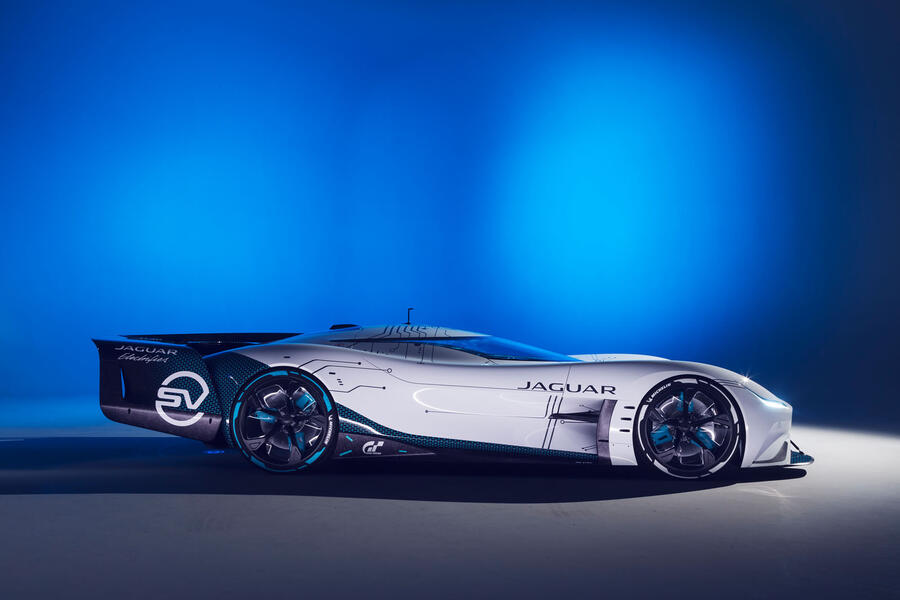Jaguar has revealed a new 1900bhp electric endurance racer concept, displaying themes that are likely to affect production models of the future, such as the successor to the Jaguar F-Type.
Although the Vision Gran Turismo SV was created for the hugely popular Gran Turismo video game (it has 83 million users worldwide), Jaguar has underscored its importance by building a full-scale model to display around the world.
Other manufacturers have previously designed cars for Gran Turismo (Bugatti, Maserati, Peugeot and Jaguar itself among them), but what’s significant here is that the firm has gone much further, creating a 3D model, involving its road car engineers and putting the finished design on public display. It denies any specific production future for the concept, however.
“Jaguars for the race track and the road have always shared the same DNA,” said design director Julian Thomson, explaining why the creative team brought in engineers from its SV production car arm as well as from Jaguar Racing. The car “showcases what’s possible when the traditional boundaries governing real-world car design are completely removed”.

The Vision Gran Turismo SV has been engineered in the virtual world to deliver extreme performance, traction and high-speed stability. It succeeds a previous Jaguar Gran Turismo Coupé, which the current team now describes as “only the starting point”.
The latest project has made it possible to re-evaluate everything, engineers say, and produce a car that’s much more effective on Gran Turismo’s wide range of tracks.
The car’s shape contains subtle styling references to the C-Type, D-Type, XJR-9 and XJR-14, but Thomson pointed out that although the new GT SV is “inspired by the past, it looks fearlessly to the future”.
















































Add your comment